- About
- Service
- We Work With
- Healthcare Specialists
- Law Firms
- Service Businesses
- Car Business
- Home Improvement Business
- Plumbing Companies
- Electrical Services
- Roofing Companies
- Handyman Contractor
- Fridge Repair
- Alarm and CCTV
- Audio Visual Specialist
- Autogate Businesses
- Solar Panel Companies
- Interior Designers
- Awning contractor
- Water Heater Install and Repair
- Furniture Installer
- Structural Engineer
- Security Window/Door Installer
- TV Repair
- Mosquito Net Suppliers
- Lighting Installer
- Home Inspection
- Washing Machine Cleaning
- Grass Cutter
- Domestic Mover
- Ceiling Fan
- TV Mounting
- Oven Repair
- Locksmith
- Gardener
- Kitchen Hob
- Electric Fence
- Event and Wedding Planner
- Bands and Singers
- Balloon Artist
- Event Space
- Party Planner
- Hair Stylist
- Makeup Artist
- Event Photographer
- Wedding Photographers
- Wedding Halls
- Photo Booth
- Magician Service
- Invitation Card Printing
- Invitation Card Designer
- Event Equipment Supplier
- Event Catering
- Emcee
- Deejay Service
- Custom Suit Designer
- Custom Shoes Designer
- Clown Services
- Wedding Gifts
- Wedding Car Rental
- Private Chef
- Beauty and Wellness
- Pricing
- Case Study
- Blog
- Contact
Boost Your Business with the Power of Local SEO
- Home
- Blog
- Boost Your Business with the Power of Local SEO
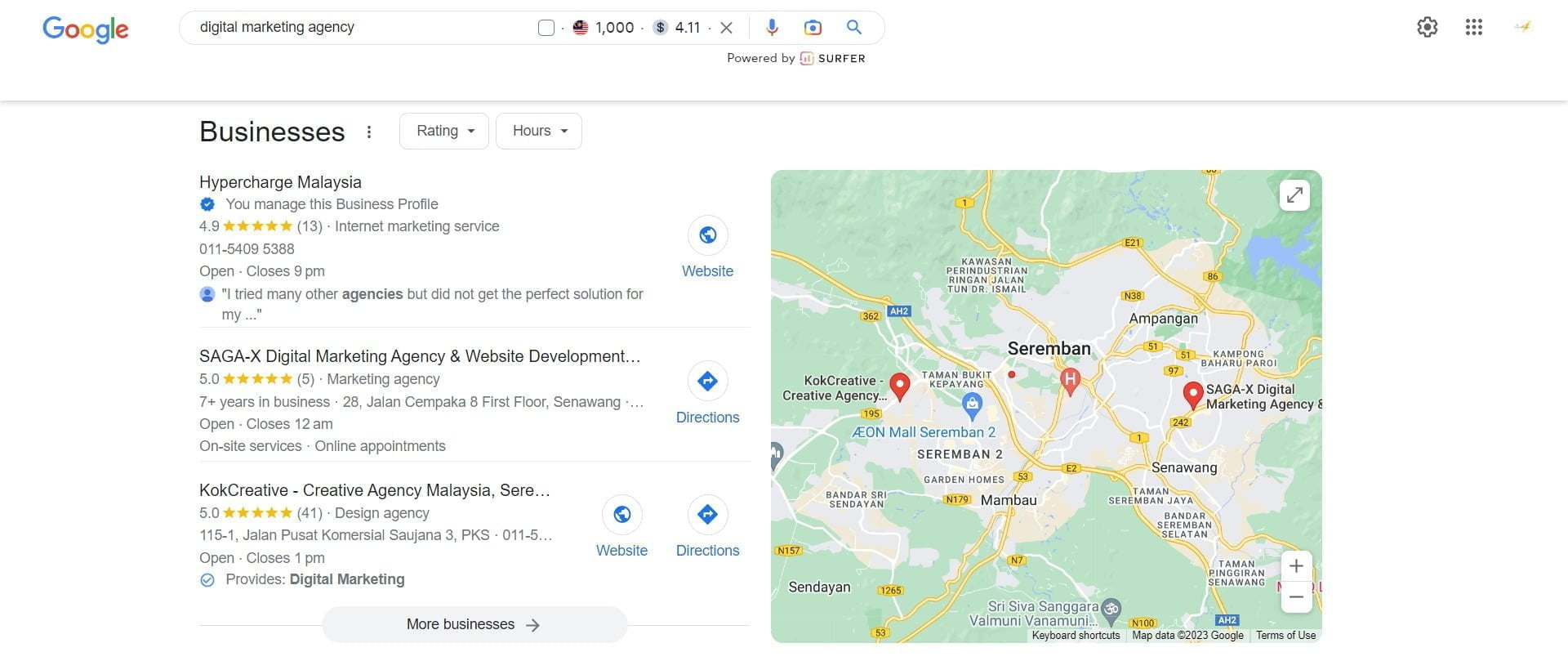
- Justin Tai
- 27 April 2023
Table of Contents
ToggleAre you a Malaysian business owner looking to boost your online presence and attract more local customers? Search no further! In this blog post, we will break down the essential steps to ace Local SEO and help you stand out in the crowded digital landscape. But don’t worry, we shall keep it simple and “boleh faham” for everyone.
Step 1: Website Audit - A Closer Look
A website audit is the first step towards optimising your online presence for Local SEO. A thorough audit involves examining various aspects of your website, such as performance, mobile-friendliness, and user experience. Let us explains further into each of these components.
Website Performance Analysis

A fast-loading, well-performing website is essential for providing a positive user experience and improving your search engine rankings. Use tools like Google PageSpeed Insights, GTmetrix, or Pingdom to evaluate your site’s performance. These tools provide valuable insights into your website’s loading times and offer suggestions for improvement, such as optimising images, enabling browser caching, and minifies CSS, JavaScript, and HTML files.
Mobile-Friendliness Assessment
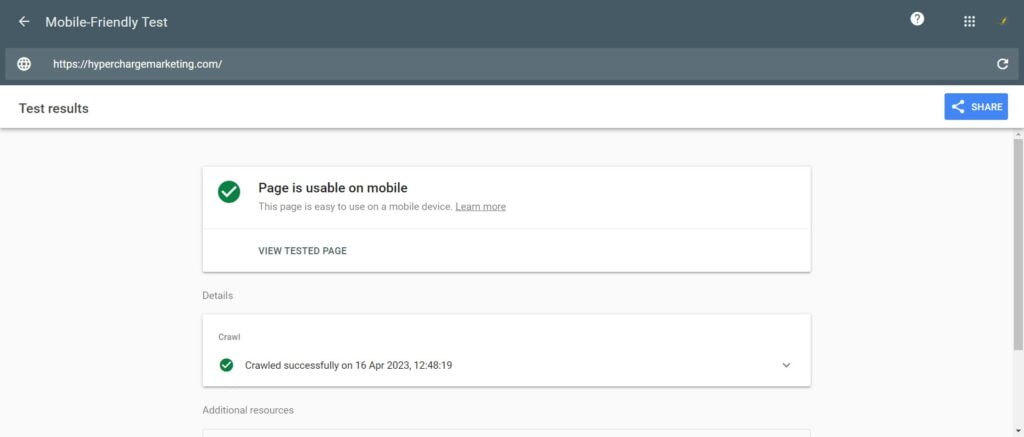

With a significant portion of online searches conducted on mobile devices, it’s crucial to ensure that your website is mobile-friendly. Google’s Mobile-Friendly Test helps you to determine whether your site is optimised for mobile devices, highlighting any issues and offering recommendations for improvement. Mobile-friendly websites typically feature responsive design, easy-to-read fonts, and optisised images for faster loading on mobile devices.
Content, Layout, and Navigation Review
The content, layout, and navigation of your website play a crucial role in delivering a positive user experience, which is vital for retaining visitors and improving search engine rankings. When reviewing your website, consider the following:
Content: Is your content relevant, engaging, and informative? Does it provide value to your target audience? Make sure your content is well-organised, better understanding, and free from spelling and grammatical errors.
Layout: Evaluate your website’s design and layout, ensuring it’s visually appealing, professional, and uncluttered. A clean and well-structured layout makes it easier for users to find the information they are looking for swiftly.
Navigation: Assess your website’s navigation, making sure it’s intuitive and easy to use. Include a clear menu with links to essential pages, and ensure that visitors can easily access your contact information and social media profiles.
- By conducting a comprehensive website audit and addressing any identified issues, you shall create a solid foundation for your Local SEO efforts, ensuring that your website is well-optimised, user-friendly, and ready to attract and retain local customers.
Step 2: Keyword Research for Local SEO
Effective keyword research is essential to any successful Local SEO strategy. In this section, we shall explain more into the process and provide some tips to help you find the right keywords for your Malaysian business.
Using Keyword Research Tools
There are several keyword research tools available to help you find relevant keywords for your Local SEO strategy. Some popular options include:
- Google Keyword Planner: A free tool provided by Google Ads that allows you to find keywords based on search volume, competition, and suggested bid amounts.
- Ahrefs: A paid SEO tool that offers an extensive keyword database and provides additional insights, such as keyword difficulty, search volume, and click-through rates.
- SEMrush: Another paid tool that offers a range of SEO and marketing features, including keyword research, competitor analysis, and site audit capabilities.
By using these tools, you can uncover valuable keyword opportunities that can drive more local traffic to your website.
Identifying Long-tail Keywords and Location-specific Phrases
Long-tail keywords are longer, more specific keyword phrases that typically have lower search volumes but higher conversion rates. They are essential for Local SEO because they often include location-specific terms that help target users in your area. Some examples of long-tail keywords for a dental clinic in Kuala Lumpur might include “teeth whitening services in Kuala Lumpur” or “affordable dental implants KL”.
To find long-tail keywords and location-specific phrases:
- Use your keyword research tool to explore variations of your primary keywords.
- Analyse the search queries that users are typing into Google to find businesses like yours.
- Incorporate local landmarks, neighborhood names, and popular terms that Malaysians might use to describe your location.
Prioritise Keywords Based on Relevance, Search Volume, and Competition
Once you have identified potential keywords, it is crucial to prioritise them based on their relevance to your business, search volume, and competition. The points are explained as below:
- Relevance: Ensure that the keywords you choose are highly relevant to your business and the products or services you offer. Irrelevant keywords may attract traffic, but they are less likely to result in conversions.
- Search Volume: Focus on keywords with a sufficient search volume to ensure that you’re targeting phrases that people are actively searching for. However, be cautious about targeting high-volume keywords with intense competition, as it may be difficult to rank for these terms.
- Competition: Analyse the competition for each keyword by looking at the websites currently ranking for those terms. Consider the strength of their backlink profiles, content quality, and user experience. Aim for keywords with lower competition, as they may be easier to rank for and provide quicker results.
- To Prioritise your keywords based on these factors, you can create a targeted and effective Local SEO strategy that helps drive more traffic and conversions for your Malaysian business.
Step 3: Competitor Analysis
Understanding your competition is vital to creating a successful Local SEO strategy. By analysing your competitors, you can identify their strengths and weaknesses, allowing you to capitalise on opportunities and improve your own online presence. Here is a detailed breakdown of how to perform a thorough competitor analysis:
Identifying Your Main Competitors
- Begin by searching for your target keywords in Google, focusing on location-specific phrases related to your business.
- Take note of the businesses that consistently rank highly for these keywords. These are your main competitors.
- You may also use tools like SEMrush or Ahrefs to discover more competitors based on shared keywords.
Evaluating Competitor Websites
Now that you have identified your main competitors, it’s time to assess their websites to understand their Local SEO strategies:
Content Analysis:
- Examine the quality, relevance, and depth of their content.
- Identify the types of content they produce (e.g., blog posts, videos, infographics) and assess their engagement levels.
- Pay attention to their keyword usage, content structure, and internal linking strategies.
Backlink Profile Analysis:
- Use tools like Ahrefs, Moz, or Majestic to analyse their backlink profiles.
- Determine the number and quality of backlinks pointing to their websites.
- Identify the sources of these backlinks and the types of content that attract the most links.
User Experience Evaluation:
- Assess their website’s design, navigation, and overall user-friendliness.
- Check their website’s mobile-friendliness using Google’s Mobile-Friendly Test.
- Analyse their website’s loading speed with tools like Google PageSpeed Insights or GTmetrix.
Identifying Gaps and Opportunities
By evaluating your competitors’ websites, you can identify areas where they excel and where they fall short. This information allows you to:
Capitalise on Gaps:
- Discover missing or underrepresented keywords in their content and target these in your own strategy.
- Address topics and concerns that your competitors are not covering, thus establishing your business as an authoritative source of information.
Improve Your Strategies:
- Adopt proven techniques from your competitors’ successful content and backlink strategies.
- Enhance your website’s user experience by learning from competitors’ best practices and avoiding their mistakes.
Stay Ahead of the Competition:
- Regularly monitor your competitors’ activities to stay informed about changes in their strategies or the market.
- Continuously refine your Local SEO strategy to maintain a competitive edge.
- By performing a comprehensive competitor analysis, you can gain valuable insights into your industry and better position your business for success in the Malaysian market. Don't miss out on these "peluang emas" to outshine your competitors and grow your business with Local SEO.
Step 4: On-Page Optimisation
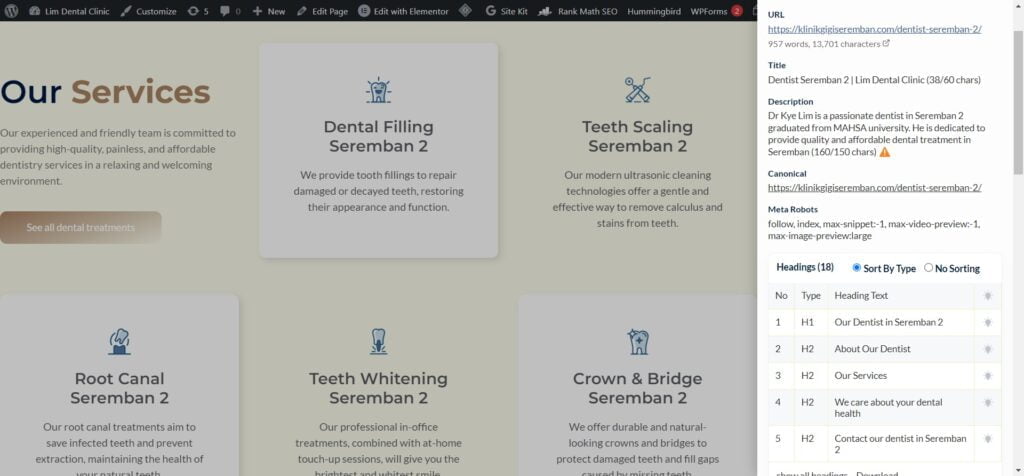

Creating Engaging, Informative, and Keyword-Rich Content
- Understand your target audience’s pain points, interests, and preferences.
- Address these points in your content to provide value and build trust.
- Incorporate target keywords naturally throughout the content, avoiding keyword stuffing.
- Use visuals, such as images, videos, and infographics, to make your content more engaging and shareable.
Writing Unique Title Tags and Meta Descriptions
- Craft unique and compelling title tags for each page, including target keywords.
- Keep title tags within 50-60 characters to ensure they display correctly in search results.
- Write persuasive meta descriptions that provide a brief summary of the page’s content and encourage users to click.
- Include target keywords in the meta descriptions and keep them within 150-160 characters.
Using Header Tags (H1, H2, H3) to Structure Content and Highlight Important Topics
- Use header tags to break your content into easily digestible sections.
- Start with an H1 tag for the main heading, followed by H2 tags for subheadings, and H3 tags for sub-subheadings.
- Incorporate target keywords in header tags, especially H1 and H2, to signal their importance to search engines.
- Make sure each header tag is descriptive and relevant to the section it represents.
Improving Internal Linking Within Your Website
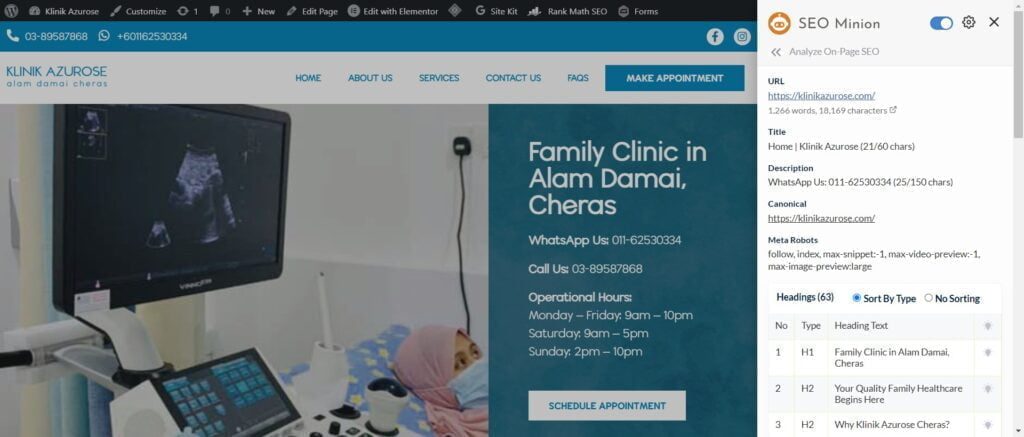

- Add internal links to connect relevant pages within your website and improve site navigation.
- Use descriptive anchor text for internal links to provide context and enhance user experience.
- Link to high-quality, authoritative pages to boost their visibility and importance in the eyes of search engines.
- Regularly audit your internal links to identify and fix broken links or outdated content.
- By focusing on these on-page optimisation techniques, you'll create a solid foundation for your website's success in search engine rankings. High-quality content, strategic use of keywords, and a well-structured website will not only improve your visibility but also enhance the user experience, increasing the likelihood of converting visitors into customers.
Step 5: Google Business Profile Setup
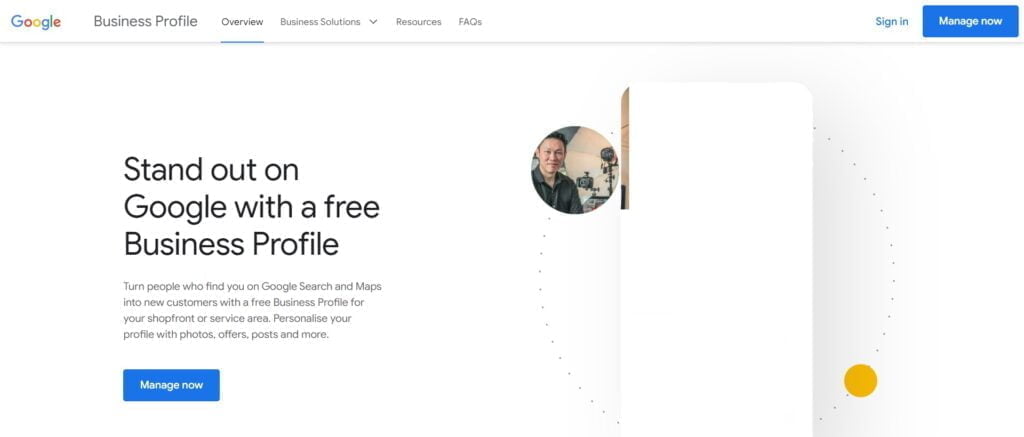

Claiming or Creating Your Google Business Profile Listing
- Start by searching for your business on Google Maps to see if it already exists. If it does, click on the listing and select “Claim this business” to begin the verification process.
- If your business is not listed, head over to the Google Business Profile website (https://www.google.com/business/) and sign in with your Google account. Click on “Manage Now” and follow the steps to create a new listing.
- Verify your business information, such as your business name, address, phone number, and website. Google may require you to verify your business through a postcard, phone call, or email, depending on your specific situation.
Optimising Your Google Business Profile Listing
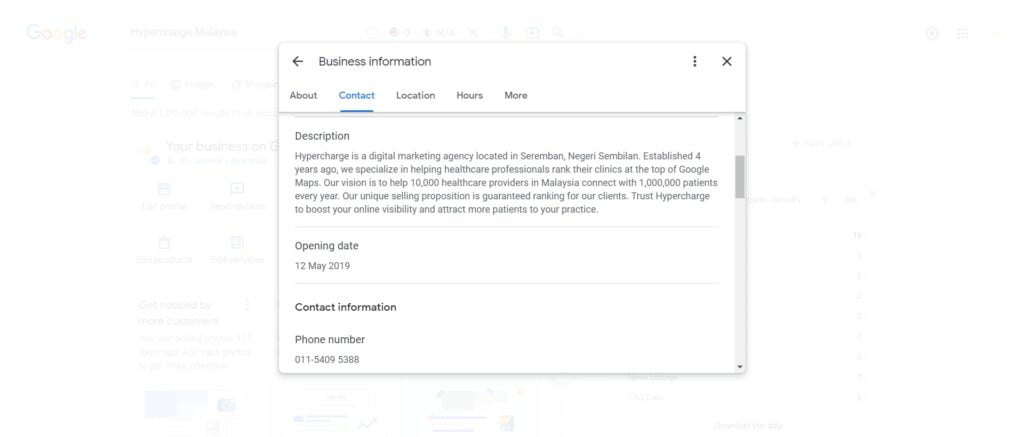

- Write a keyword-rich business description that highlights your products or services and their benefits. Be sure to include your location and any unique selling points.
- Ensure that your contact information is accurate and up-to-date. This includes your business name, address, phone number, website, and email address.
- Upload high-quality images to showcase your business, products, services, or team. Include a mix of interior and exterior shots, as well as images that showcase your products or services in action. Make sure to follow Google’s guidelines for image sizes and formats.
- Select relevant business categories that accurately represent your products or services. Choosing the right categories can improve your visibility in local search results.
- Add your business hours, including any special or holiday hours, to keep customers informed about when they can visit or contact you.
Encouraging and Responding to Customer Reviews
- Ask satisfied customers to leave reviews on your Google My Business listing. This can be done through email, social media, or in-person conversations. You can also provide a direct link to your review page to make it easier for them.
- Respond to all reviews, both positive and negative, in a timely and professional manner. Thank your customers for their feedback and address any concerns or issues they may have.
- Use feedback from reviews to improve your products or services and demonstrate to potential customers that you value their opinions.
- Avoid offering incentives or discounts for reviews, as this is against Google’s guidelines and can lead to penalties.
- By claiming, optimising, and actively managing your Google My Business listing, you shall not only improve your Local SEO efforts but also provide potential customers with essential information they need to choose your business over competitors.
Step 6: Local Citations – Expanding Your Online Presence
Local citations play a crucial role in boosting your business’s visibility in local search results. They help establish your online presence, improve your search engine rankings, and enhance your credibility. In this expanded section, we’ll discuss the importance of local citations and offer some practical tips for managing them effectively.
What are Local Citations?
Local citations refer to any online mention of your business’s name, address, and phone number (NAP) on various platforms such as directories, review websites, social media profiles, and other relevant websites. These citations act as signals for search engines, helping them understand your business’s location, services, and target audience.
Importance of Local Citations for Local SEO
- Improve Local Search Rankings: Search engines like Google use citations as a factor in determining the relevance and authority of your business. The more consistent and accurate citations you have, the better your chances of ranking higher in local search results.
- Enhance Credibility: Having your business listed on reputable local directories and review websites can boost your credibility and trustworthiness among potential customers.
- Increase Brand Visibility: Citations help increase your brand visibility and allow potential customers to discover your business when they search for services or products in your area.
Tips for Building and Managing Local Citations
Identify Relevant Directories and Review Websites: Look for local directories and review websites specific to your industry and location. Some popular platforms include Yelp, Foursquare, and Yellow Pages, but also consider local Malaysian directories such as Bizmalay, or LookP.
Create Accurate and Consistent Listings: Make sure your NAP information is accurate and consistent across all platforms. Inconsistencies can confuse search engines and hurt your local search rankings.
Optimise Your Listings: Go beyond just providing NAP information. Add a detailed business description, your operating hours, high-quality images, and any other relevant details that can help potential customers learn more about your business.
Encourage Customer Reviews: Positive customer reviews can not only help improve your search rankings but also help build trust among potential clients. Encourage satisfied customers to leave reviews on your local listings and respond to them professionally.
Regularly Monitor and Update Your Citations: Keep track of your listings and update them regularly to maintain their accuracy. Outdated information can hurt your search rankings and lead to potential customers getting incorrect details about your business.
Remove Duplicate Listings: Duplicate listings can dilute your search rankings and confuse potential customers. Use tools like Moz Local or Yext to identify and remove duplicate listings on various platforms.
- By investing time and effort in building and managing local citations, you can significantly improve your Local SEO and attract more customers to your Malaysian business. And remember, consistency is key – maintain accurate and up-to-date information across all platforms to boost your online presence and credibility.
Step 7: Content Creation
Creating high-quality, relevant content is a critical aspect of Local SEO, as it helps establish your authority, engage your audience, and boost your search rankings. Let’s dive deeper into the content creation process:
Develop a Content Strategy
Before you start producing content, it’s essential to have a well-thought-out content strategy in place. Consider the following steps to create an effective plan:
- Define your target audience: Identify the demographics, interests, and pain points of your potential customers. Understanding your audience will help you create content that addresses their needs and concerns.
- Perform keyword research: Find local keywords relevant to your business and audience. Incorporate these keywords into your content to improve your visibility in local search results.
- Set goals and objectives: Determine what you want to achieve with your content, such as increasing website traffic, generating leads, or boosting brand awareness.
Diverse Your Content Types


Publishing a variety of content formats keeps your audience engaged and caters to different preferences. Consider using the following content types:
- Blog posts: Write informative articles that address common questions, provide tips, or share industry news. Include local keywords and examples to make your content more relevant to your target audience.
- Infographics: Create visually appealing infographics that present complex information in an easy-to-understand format. These graphics can be shared on social media or embedded in blog posts.
- Videos: Produce engaging video content, such as tutorials, interviews, or behind-the-scenes looks at your business. Share these videos on your website, social media platforms, and YouTube.
- Case studies: Showcase your business’s success stories by creating detailed case studies. Highlight the challenges faced, solutions provided, and results achieved to demonstrate your expertise and build trust with potential customers.
Update Content Regularly
Maintaining a consistent publishing schedule and updating your content regularly is crucial for SEO and user engagement. Here are some tips for keeping your content fresh:
- Set a publishing schedule: Create a content calendar that outlines when and what types of content you’ll publish. This will help you stay organised and ensure a consistent flow of new content.
- Refresh outdated content: Periodically review your existing content and update it with new information, images, or links to keep it relevant and valuable to your audience.
- Monitor content performance: Use analytics tools to track your content’s performance and identify topics that resonate with your audience. Use this data to inform your future content strategy and focus on producing content that drives results.
- By implementing a comprehensive content creation strategy, you can enhance your Local SEO efforts, engage your Malaysian audience, and establish your business as a trusted source of information in your industry.
Step 8: Link Building
Link building is a crucial aspect of any SEO strategy, and it’s especially important for Local SEO. High-quality backlinks from reputable sources can boost your website’s authority and search engine rankings, making it easier for potential customers to find your business online. In this section, we will explain further into the link-building process and provide tips on how to secure valuable backlinks for your Malaysian business.
Identifying Link-Building Opportunities
To start, you will need to find potential link-building opportunities in your niche. Here are some methods to help you uncover these opportunities:
Local directories and review websites: Look for local business directories and review websites that are relevant to your industry and location. Submitting your business information to these platforms can result in valuable backlinks.
Local news outlets and blogs: Reach out to local news websites, online magazines, or blogs that cover topics related to your industry. Offer to write a guest post or contribute valuable content in exchange for a link back to your website.
Sponsorships and partnerships: Partner with local events, charities, or non-profit organisations and offer support in exchange for a backlink on their website.
Industry-specific forums and online communities: Join forums and online communities related to your industry, actively participate in discussions, and share your expertise. Include a link to your website in your forum signature or profile.
Outreach and Relationship Building
Once you have identified potential link-building opportunities, it’s time to reach out and build relationships. Here are some tips for effective outreach:
Personalise your emails: Rather than sending generic emails, take the time to personalise your outreach. Address recipients by name, mention their work or content you had enjoyed, and explain why your content or collaboration would be valuable to their audience.
Offer value: When reaching out, focus on the value you can provide to the recipient. This could be in the form of unique content, expert insights, or a partnership that benefits both parties.
Be professional and courteous: Remember to be polite, professional, and respectful in all your communications. Even if you do not secure a backlink, you shall building relationships that could lead to future opportunities.
Follow up: If you did not receive a response to your initial email, consider sending a polite follow-up message after a week or two. Sometimes emails can be overlooked, and a gentle reminder can help you secure a valuable backlink.
Maintaining Relationships for Future Backlinks
Securing backlinks is just the beginning of the link-building process. It is crucial to maintain relationships with your contacts to ensure ongoing collaboration and future backlink opportunities. Here are some tips for nurturing these relationships:
Stay in touch: Regularly engage with your contacts through social media, email, or in-person events. Show genuine interest in their work and share their content to demonstrate your ongoing support.
Offer ongoing value: Continue to provide value by sharing useful content, insights, or industry updates with your contacts.
Be responsive: If a contact reaches out to you with a question, request, or collaboration opportunity, respond promptly and professionally. This will show your commitment to the relationship and help solidify your reputation as a valuable partner.
- By following these steps, you can build a strong link-building strategy that boosts your Local SEO efforts and helps your Malaysian business succeed online. Remember, link building is an ongoing process, so be patient and persistent in your efforts.
Technical SEO - The Backbone of Your Website's Performance
Technical SEO is an essential aspect of search engine optimisation that focuses on improving the technical aspects of a website to enhance its performance, user experience, and search engine ranking. Let’s delve deeper into the three key components of technical SEO mentioned earlier:
1. Improving Site Speed



Site speed plays a crucial role in user experience and search engine rankings. A slow-loading website can lead to high bounce rates and lower conversion rates. Here are some techniques to improve site speed:
- Optimise images: Compress and resize images using tools like TinyPNG or ImageOptim to reduce file sizes without compromising quality.
- Minimise JavaScript and CSS files: Use tools like UglifyJS and CSSNano to remove unnecessary spaces, comments, and characters from your code, reducing file size and improving load times.
- Use a caching plugin or Content Delivery Network (CDN): Caching plugins like WP Rocket or W3 Total Cache store static versions of your web pages, reducing server load and improving load times. CDNs like Cloudflare or Amazon CloudFront distribute your content across multiple servers globally, ensuring faster load times for users worldwide.
2. Fixing Broken Links and Redirect Errors
Broken links and redirect errors can negatively impact user experience and search engine rankings. To fix these issues:
- Use tools like Screaming Frog or Google Search Console to identify broken links and redirect errors on your website.
- Replace broken links with relevant, up-to-date content or remove them if no suitable replacement is available.
- Fix redirect errors by implementing proper redirects (e.g., 301 redirects for permanent URL changes) and ensuring that all links point to the correct destination.
3. Implementing Structured Data Markup (Schema.org)


Structured data markup, also known as Schema.org markup, helps search engines understand the content on your website better, potentially leading to enhanced search results and improved click-through rates. Here’s how to implement structured data markup:
- Identify the types of content on your website that can benefit from structured data, such as articles, events, products, or local businesses.
- Use Google’s Structured Data Markup Helper or JSON-LD Schema Generator to create the appropriate markup for your content.
- Add the generated markup to your website’s HTML code or use a plugin like Schema Pro or WP SEO Structured Data Schema for WordPress websites.
- Test your implementation using Google’s Rich Results Test or the Structured Data Testing Tool to ensure it’s correctly formatted and recognised by search engines.
- By addressing these technical SEO components, you'll create a strong foundation for your website's performance, enhancing both user experience and search engine rankings.
Step 10: Social Media Integration for Local SEO
Harnessing the power of social media is essential for promoting your local business and connecting with potential customers in your area. By integrating social media into your Local SEO strategy, you can boost your online presence and engage with your target audience more effectively.
Creating and Optimising Social Media Profiles
To maximise your social media efforts, start by creating and optimising profiles on platforms that are relevant to your target audience. Some popular platforms in Malaysia include Facebook, Instagram, LinkedIn, and Twitter. Keep these tips in mind when setting up your profiles:
- Use a consistent and recognisable profile picture and cover photo across all platforms.
- Include a keyword-rich bio or description, highlighting your business’s unique selling points and location.
- Provide accurate contact information and a link to your website.
- Enable location services, if applicable, to help potential customers find your business more easily.
Sharing Locally-Focused Content
Sharing content that is relevant to your local community can help establish your business as a valuable resource and build trust with potential customers. Here are some ideas for locally-focused content:
- Highlight local events, news, or partnerships your business is involved in.
- Share promotions or special offers exclusive to your local customers.
- Showcase customer testimonials or success stories from people in your community.
- Post behind-the-scenes content featuring your staff, office, or local landmarks.
- Create informative content related to your industry that addresses the specific needs of your local audience.
Engaging with Your Local Community
Social media is a two-way street, so it’s crucial to engage with your audience and participate in conversations within your community. Here are some ways to do so:
- Respond to comments, messages, and reviews promptly and professionally.
- Join local groups, forums, or online communities relevant to your business or industry.
- Collaborate with local influencers or other businesses for joint promotions or events.
- Participate in local events or sponsorships, and share these experiences on your social media profiles.
- Use local hashtags and geotags to increase the visibility of your content among users in your area.
Monitoring Social Media Performance
To ensure your social media efforts are effective, it is essential to monitor your performance and adjust your strategy accordingly. Here are some tips for tracking your progress:
- Use built-in analytics tools provided by each social media platform to measure engagement, reach, and conversions.
- Set up custom tracking links or UTM parameters to measure traffic from your social media profiles to your website.
- Monitor your competitors’ social media activity and engagement levels to identify areas for improvement or new opportunities.
- Regularly review your content strategy and posting frequency to ensure you’re meeting the needs and interests of your local audience.
- By integrating social media into your Local SEO strategy, you can effectively engage with your local community, increase your online visibility, and ultimately drive more customers to your Malaysian business.
Step 11: Ongoing Monitoring and Refinement
To ensure the success of your Local SEO strategy, it is crucial to continuously monitor your performance, analyse data, and make refinements as needed. Here’s how to approach this critical step:
Setting Up Goals and KPIs in Google Analytics
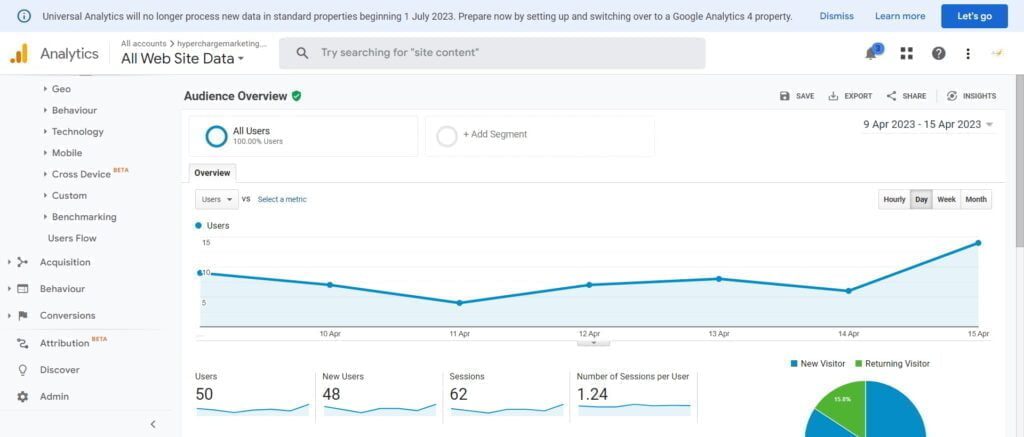

- Determine your primary objectives for your Local SEO campaign, such as increasing organic traffic, boosting local keyword rankings, or driving more conversions.
- Identify Key Performance Indicators (KPIs) that will help you measure the success of your campaign. Examples of KPIs include the number of website visitors, the average session duration, bounce rate, and conversion rate.
- Set up goals in Google Analytics to track these KPIs. By doing so, you can monitor the progress of your Local SEO efforts and make data-driven decisions.
Regularly Analysing Data for Trends and Areas of Improvement
- Schedule regular check-ins to review your Google Analytics data, Google Search Console insights, and other SEO tool reports.
- Keep an eye on the performance of your targeted keywords and how they contribute to your overall organic traffic.
- Analyse user behaviour data, such as pages visited, time spent on site, and bounce rate, to identify areas where you can improve user experience and engagement.
- Compare your performance to that of your competitors to identify potential opportunities or areas where they are outperforming you.
Adjusting Your Local SEO Strategy Based on Performance Data, Market Changes, and New Opportunities
- Use the insights gained from your data analysis to refine your Local SEO strategy. This may involve updating your content, improving your website’s technical performance, or adjusting your link-building efforts.
- Stay up-to-date with market changes and industry trends that may affect your Local SEO performance. This includes keeping an eye on your competitors, following industry news, and staying informed about any algorithm updates from Google.
- Be proactive in identifying new opportunities for growth, such as targeting new local keywords, collaborating with local influencers, or expanding your presence on additional online platforms.
- In conclusion, ongoing monitoring and refinement are essential for the long-term success of your Local SEO campaign. By staying informed, analysing data, and making strategic adjustments, you'll be better equipped to navigate the ever-changing digital marketing landscape and achieve sustained growth for your Malaysian business.
Frequently Asked Questions (FAQs)
Local SEO is an ongoing process, and results may vary depending on the competition and the strategies implemented. However, you can generally expect to see improvements within 3 to 6 months.
Google Business Profile is a crucial tool for Local SEO because it allows your business to appear on Google Maps and local search results. An optimized listing can increase your online visibility and drive more customers to your business.
While traditional SEO focuses on improving your website’s visibility on a national or global scale, Local SEO targets customers in a specific geographical area. Local SEO strategies prioritize location-specific keywords, local citations, and Google Business Profile optimization.
Monitor your website’s performance using tools like Google Analytics, Google Search Console, and other SEO tools. Track metrics such as organic traffic, keyword rankings, and conversion rates to gauge the effectiveness of your Local SEO strategy.
By following these steps, you will be well on your way to improving your online presence and attracting more local customers to your business. Remember, Local SEO is an ongoing process, so it is essential to continually monitor your performance and adjust your strategy as needed. With a bit of persistence and the right approach, your Malaysian business will thrive in the digital marketing landscape. So, “jangan lepas peluang” and get started on your Local SEO journey today!
Are you looking for a professional digital marketing agency to help you with your Local SEO efforts? Get in touch with Hypercharge, and let’s work together to boost your business in Malaysia!


